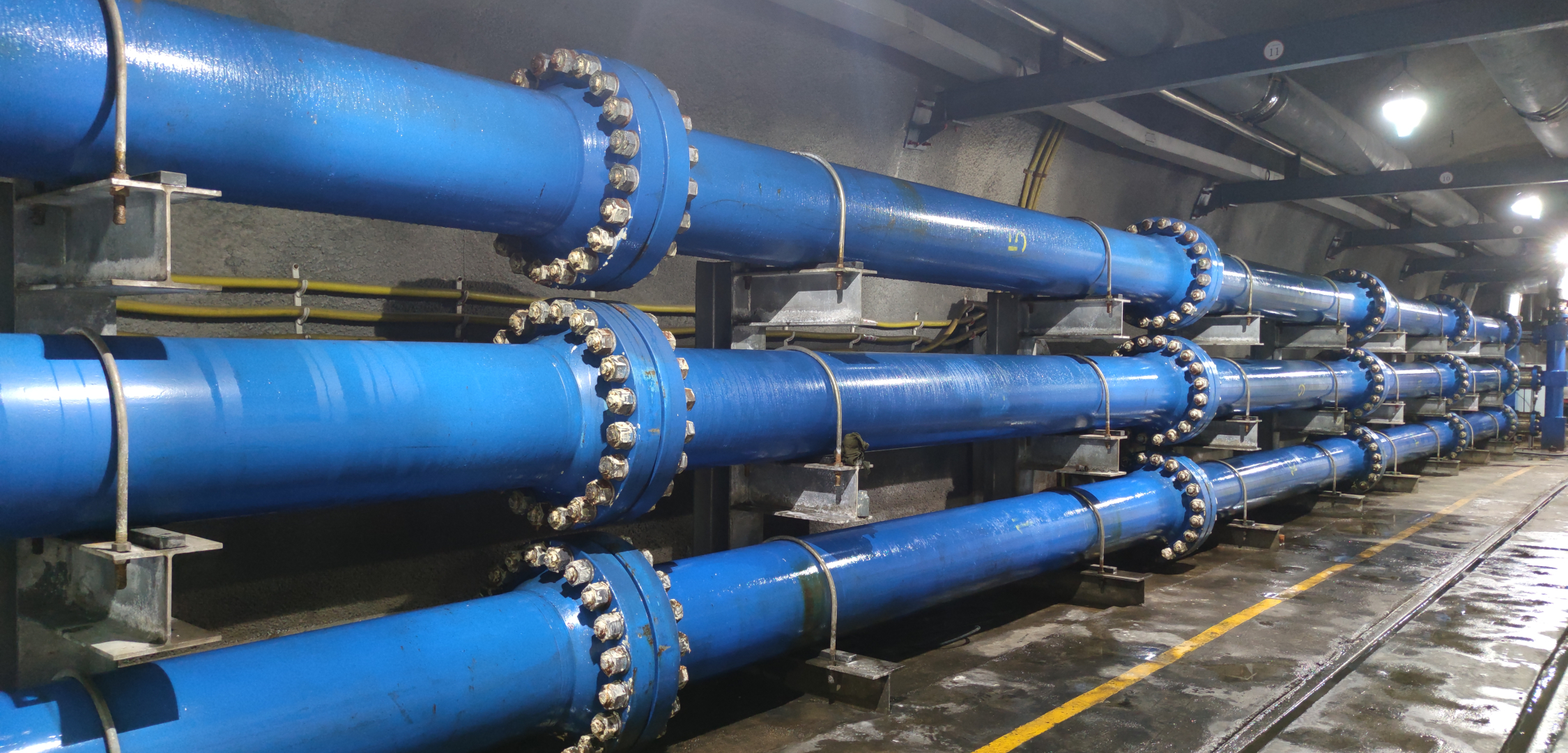Pressure Exchanger P.E.S.®
The three-chamber tube distributor or pressure exchange system (P.E.S.) is a technical system for use in underground cooling systems.
FUNCTIONAL PRINCIPLE
Situated below ground, the P.E.S.® forms the link between two circuits: high-pressure circuit and low-pressure circuit.
In the high-pressure circuit, the water circulates between the above ground parts of the system and the underground P.E.S.®. The pressure in the high-pressure circuit is generated by the difference in height between the above ground parts of the system and the P.E.S.® below ground. In the low-pressure circuit the water circulates between the P.E.S.® and the underground coolers, which ensures their supply with cold water. As the P.E.S.® carries out a pressure-balance of the water, received from above ground, before forwarding it to the underground-coolers, this water circuit can operate on a low-pressure mode.
A special feature of the P.E.S.® is the transmission of the supplied cold water to the coolers, which not only leads to a temperature transition, but furthermore to the transport of the medium itself. The merely marginal loss of cooling between water-transmission to the P.E.S.® and the outflow into the low-pressure circuit, demonstrates the efficiency advantages of a cooling system fitted with a P.E.S.®, as this results in a lower flow rate and consequently in a reduction of energy, used during operation on pump output and cooling generation.
As the name indicates, the P.E.S.® or "three-chamber tube distributor" consists of three tubular chambers. Each chamber is connected to both the high-pressure and the low-pressure circuit and can be connected to either one of the two circuits by opening up the particular valve, or remain in the standby condition if the valves are closed. To maintain a constant flow in both circuits, one of the tubular chambers has to be connected to the high-pressure circuit while the second one is connected to the low-pressure circuit. The third chamber remains in the standby mode until resuming the function of one of the two active chambers. Meanwhile, the chamber in standby undergoes a pressure balance via the bypass pipes and bypass slide valves, which provide an additional connection between each tubular chamber and both of the circuits.
The valves open and close hydraulically. The processes are controlled using specifically developed software.
TECHNICAL FEATURES
- Temperature rise < 0.5
- Lifelong constant efficiency
- Up to 20 MW cooling capacity with one P.E.S.®
- Pressure-changing up to 150 bar with one P.E.S.®
- Stepwise extendable
- Short downtimes for maintenance work
- Small space requirement below ground

